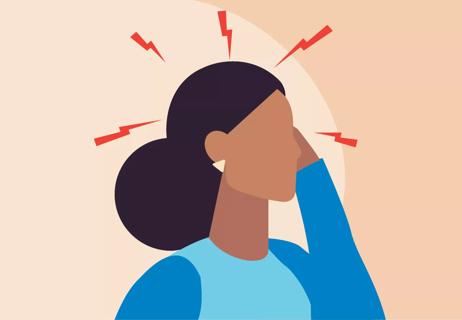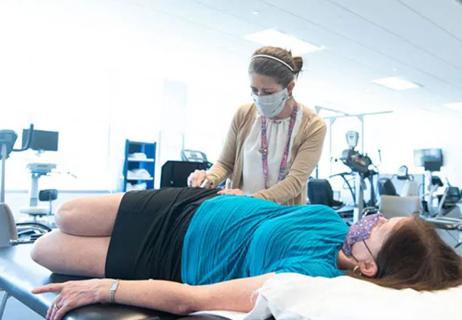Advertisement
5 helpful factors for success from an experienced psychiatrist

Some Latinos view mental illness as a sign of weakness. Others think it’s a personal issue to be kept quiet. Others fear being labeled “loco,” Spanish for “crazy.”
Advertisement
Cleveland Clinic is a non-profit academic medical center. Advertising on our site helps support our mission. We do not endorse non-Cleveland Clinic products or services. Policy
Mental health disorders are prevalent among Latino ethnic groups in the U.S. The Hispanic Health and Nutrition Examination Survey reported that 28 percent of Puerto Ricans living in the U.S. had depression symptoms. So did 13 percent of Mexican Americans and 10 percent of Cuban Americans.1
However, only 20 percent of Latinos with a mental disorder talk about it with a primary care physician, according to the U.S. Surgeon General’s report, Mental Health: Culture, Race, and Ethnicity.2 And only 10 percent pursue treatment from a mental health provider.
“Mental health issues have a stigma3 in the Latino community,” says psychiatrist Diana Lorenzo, MD, of Cleveland Clinic’s Center for Behavioral Health. “Many Latinos would prefer to ignore these conditions over talking about them openly.”
Originally from Argentina, Dr. Lorenzo completed her psychiatry residency at Cleveland Clinic. She joined the Cleveland Clinic staff in 2016, when she began leading the mental health care of Spanish-speaking patients at the Hispanic Clinic at Cleveland Clinic Lutheran Hospital, located in a Cleveland neighborhood with a large Latino population. In a little over a year, her caseload has increased more than 16-fold.
Dr. Lorenzo credits five factors — outlined below — in helping her improve Cleveland-area Latinos’ access to mental health care.
Advertisement
Communication is essential to diagnosing mental disorders, so understanding what patients are expressing is critical. Using an interpreter may help, but a psychiatrist who speaks the patient’s native language — and can interpret cultural nuances and jargon — is often most effective, says Dr. Lorenzo.
Since Latinos with a mental health concern are twice as likely to consult a PCP rather than a mental health provider, collaborating with primary care clinics is vital to reaching this population. “Latinos typically won’t claim they’ve had a panic attack, for example, but they will report the somatic symptoms, like chest pain and shortness of breath,” says Dr. Lorenzo. “PCPs are the ones to identify the psychological root of the symptoms and refer patients for appropriate care.”
Latinos have strong family networks, says Dr. Lorenzo. Family support can help alleviate the stigma of a mental disorder and embolden patients to address it. “I encourage my patients to bring their parent, spouse or child to their appointments,” she says. “Sharing information with family members increases their understanding of the disease and helps them better support the patient.”
Schizophrenia, bipolar disorder and similar severe mental illnesses are especially stigmatizing — labeled “locura” (Spanish for “craziness”) by many Latinos. More common disorders, such as depression and anxiety, are regarded as merely “nervios” (“nervousness”) and perceived as short-term, easier to treat and not requiring medication. As such, Dr. Lorenzo is cautious about recommending pharmacotherapy to her patients.4 “Latinos tend to view psychotherapy as more acceptable,” she says. “If appropriate, I often recommend that first, then add medication later if needed.”
Lack of information and misunderstanding fuel the stigma. Providing details about diagnoses, discussing treatment options and answering questions may be the best way to eradicate stigma. “Explaining the biological underpinnings of mental health disorders is enlightening to many Latinos,” says Dr. Lorenzo. “When they understand that chemicals in the brain play a primary role, they view the diseases differently.”
Helping Latinos overcome their community’s stigma about mental illness is difficult. But the more that physicians understand Latino culture and work to raise awareness of mental health disorders and symptoms, the better.
“When a Latino patient does disclose information indicating possible depression, anxiety or another mental health concern, we need to address it immediately,” says Dr. Lorenzo. “For them to open up, they must really be struggling.”
Providers in Northeast Ohio can refer Latino patients for mental health appointments or triage at Cleveland Clinic’s Hispanic Clinic by calling 216.444.5812.
Advertisement
Advertisement
Advertisement

Q&A with Brain Trauma Foundation guideline architect Gregory Hawryluk, MD, PhD

Q&A with newly arrived autoimmune neurology specialist Amy Kunchok, MD

A neurocritical care specialist shares what’s spurring growth of this new evaluation approach

Focused ultrasound offers a newer alternative to deep brain stimulation

Prehabilitation can help improve outcomes after spine surgery

Get ready for central vein sign and optical coherence tomography

How these new drugs fit into practice two years out from their first approvals

A conversation on the state of physiatry with the AAPM&R’s Vice President